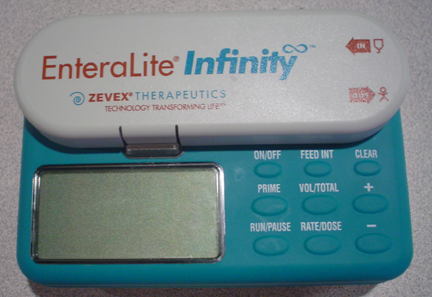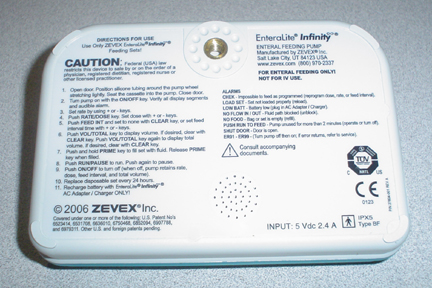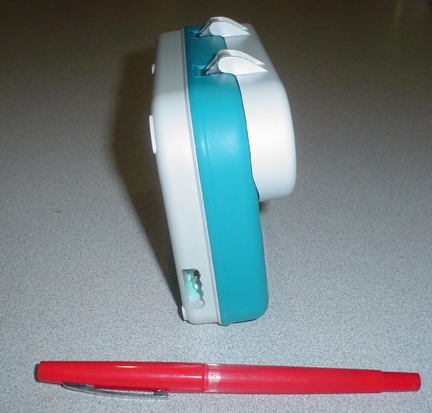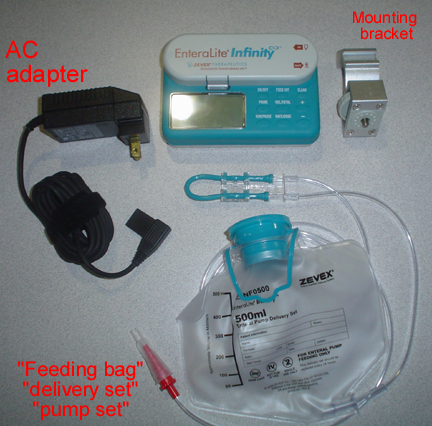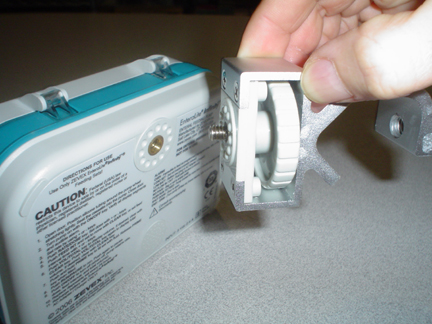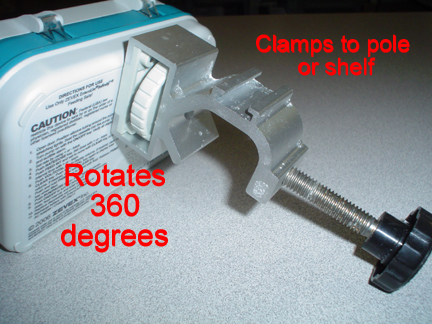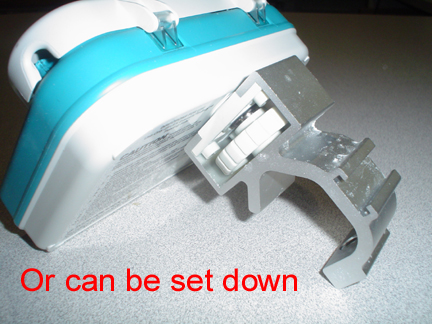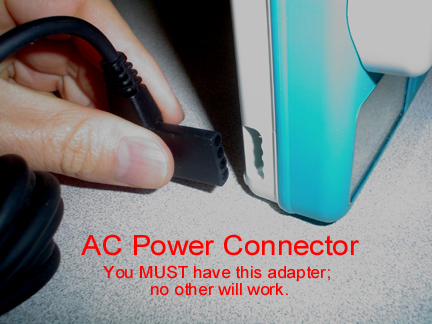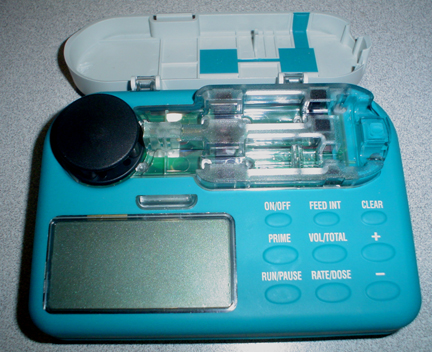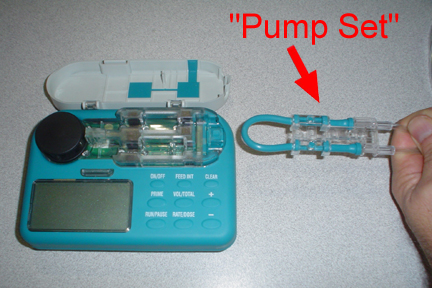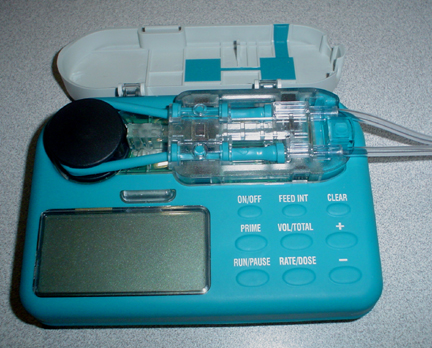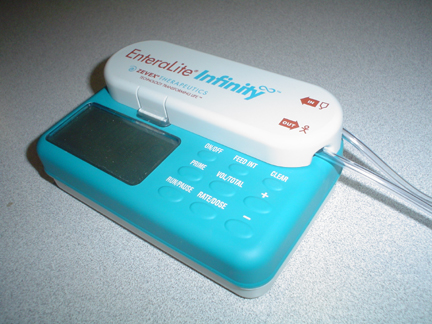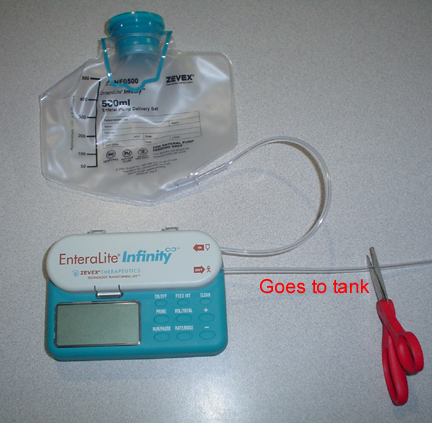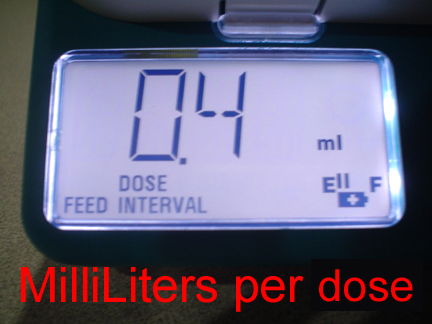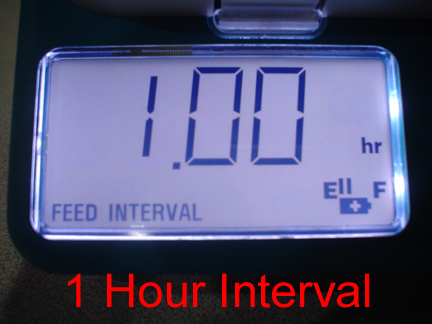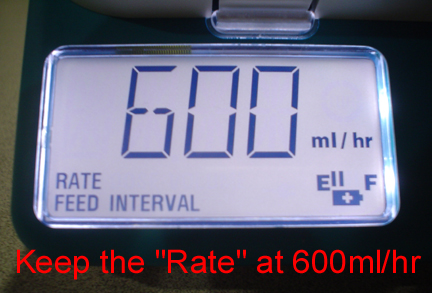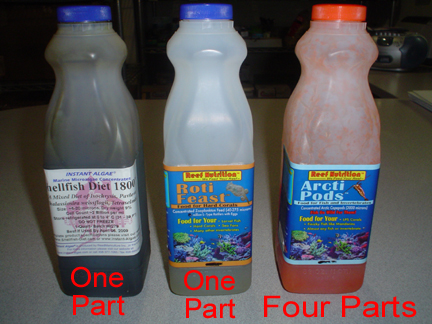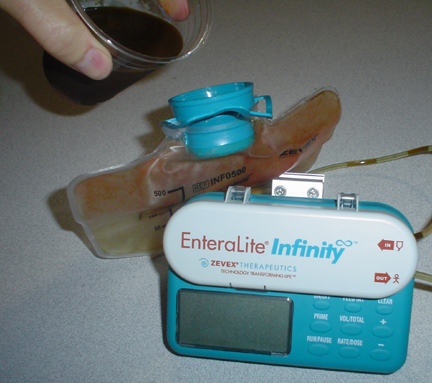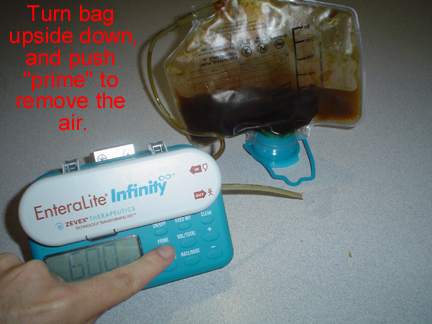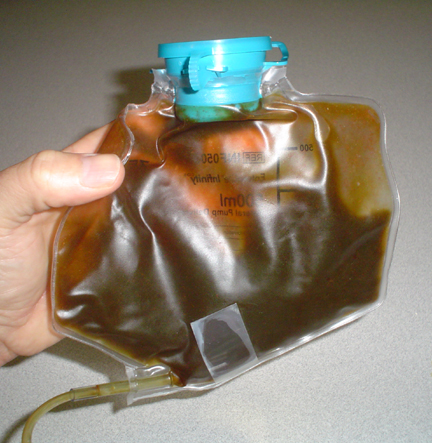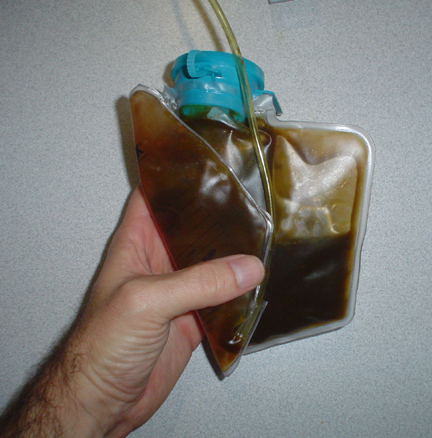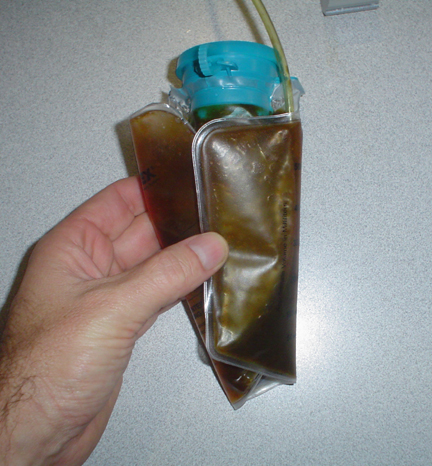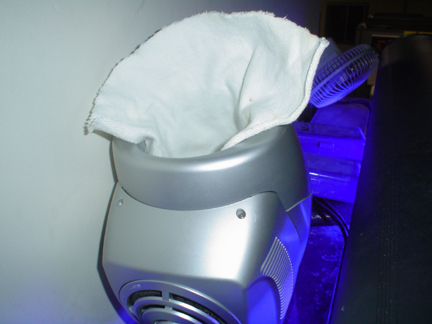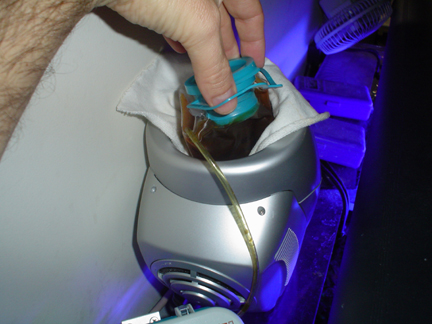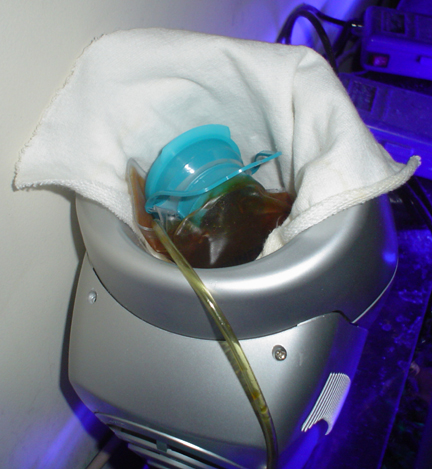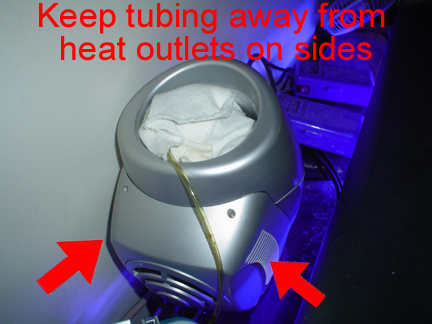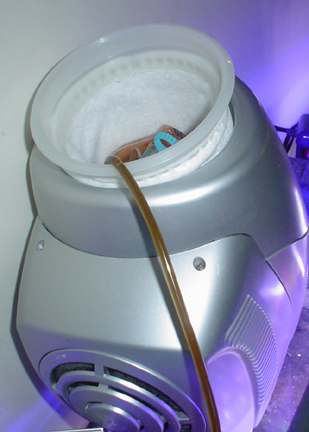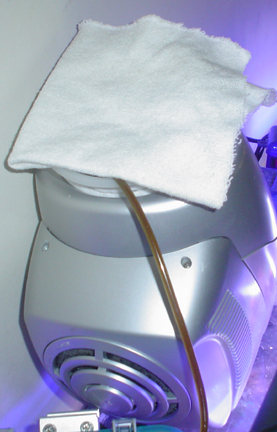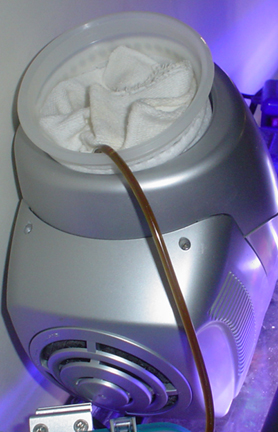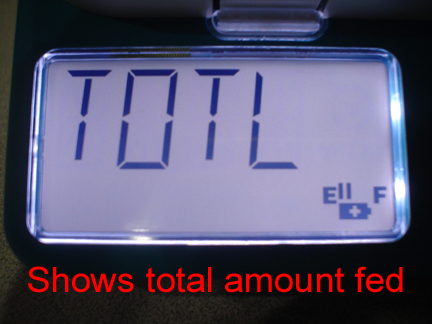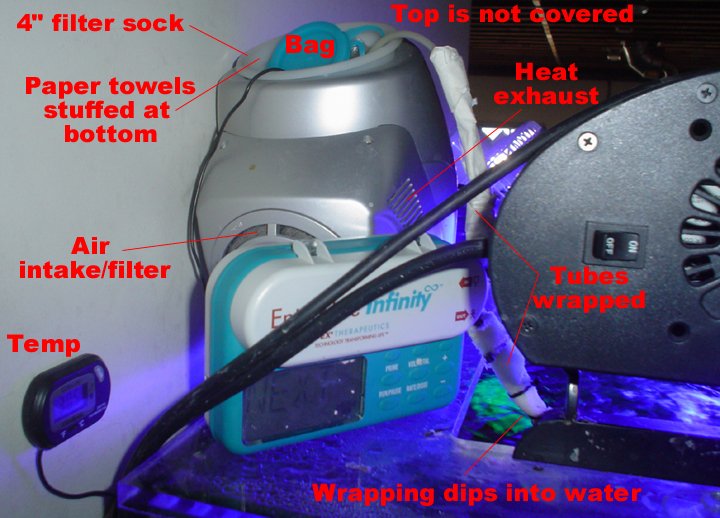Automatic Continuous Feeder - DIY
Part 1 of 5
Here is my solution to the problem of trying to feed continuously. My application was for feeding NPS corals, but this will work for any corals, and most fish. Here is a pic and vid of the food being sprayed into the display:

Video:
http://www.youtube.com/watch?v=uKLwB-xpRls
Advantages of continuous feeding:
Overall: The ocean generally feeds it's corals continuously (although maybe more at night), so duplicating this allows the corals (and some fish, especially tangs) to eat more like they do in the wild.
Less rotting: When you manually feed once or twice a day, much of the food gets past the fish and corals, and rots in the rocks and sand. When you feed continuously, the fish and corals get most of the food before it settles. So you get to feed the same amount, but the fish and corals get more, and less rots.
Keep pumps running: Many people turn their return pump off while feeding, so that food does not go to the sump. This is not necessary with continuous feeding, since most of the food will be eaten in a few seconds, and thus won't even make it to the overflow. So pumps last longer.
Keep skimmer running: Many people also turn their skimmer off while feeding. Again this is not necessary; food removed by the skimmer is being constantly replaced by the feeder (you may have to feed a little more, however, to make up for it.)
Mandatory for NPS: Non Photo Synthetic corals must have as close to continuous feeding as possible. Some of the more difficult NPS will actually close up if you feed too much at one time; thus, small continuous amounts are the only way to keep them alive.
No forgotten feedings: While not critical to fish, some corals (and certainly NPS) may not open again if you miss too many feedings.
More accurate: Since the feeder is automatic, you know for sure how much you are feeding, and how much you have fed. This makes it easy to compare coral growths (as well as nuisance algae growth) while varying the feeding amounts.
Free time: I thought that I'd miss feeding, but I don't. I still get to watch the feedings (for me, every hour), I just don't have to stand up and do them.
The main requirements of the feeder were:
1. Tiny feeding amounts: As little as 0.1 milliliters at a time. The foods that I'm using (Reed's Phytofeast and Reed's Rotifeast for the NPS corals; Reed's Arctipods for the other corals and for the fish) are very concentrated. Reeds recommends that the foods not be diluted in water; so very very small amounts of the concentrate must be fed each time.
2. Adjustable feeding amounts: In order to experiment with how much can be fed before problems arise (like nuisance algae), it needs to be pushbutton-adjustable. If you are feeding non-concentrated foods like melted mysis cubes (1 cube = 3ml), you could easily adjust it to a higher amount.
3. Adjustable feeding schedule: As short as every few minutes, or as long as every couple of hours. Or just plain continuous.
4. Ability to feed very thick liquids, including melted mysis cubes.
5. Refrigeration: Would keep the liquid chilled at all times, with an adjustable temperature as low as freezing (but would not freeze it).
6. Capacity: Would hold enough to feed an entire month without refilling.
7. Would sit on top of tank, so that the food would go directly into the display. This means the unit would need to be small, quiet, and have a decent appearance.
8. Reliability: It would not fail (and thus not starve the tank.)
9. Mechanically Safe: No possibility, at all, of all the food being fed at once.
10. Electrically safe: Splashed water, condensation, or salt creep would not shock anything, and would not cause failure.
11. Settling: Larger pieces of food should not settle to the bottom of the food container.
12. Cost: This is subjective, but for me the ability to keep NPS corals, and to not have to feed again for an entire month, means that I'd be willing to spend several hundred dollars.
Here is my solution: An electronic wine chiller, connected to an enteral feeding pump, sitting on the top of the tank:
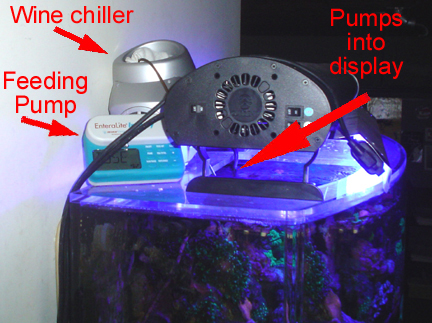
A "digital" or "electronic" wine chiller is a thermoelectric chiller that does not use a compressor; instead it only has a fan. Some models actually have a digital readout, but the one that worked best for me does not. An "enteral" feeding pump is a peristaltic medical pump designed to feed patients who cannot eat; it pumps liquid food directly into the intestine. (Note: An enteral pump is different from an "IV" pump).
Here is the "Wine Bottle Cooler/Warmer", as sold on Ebay:
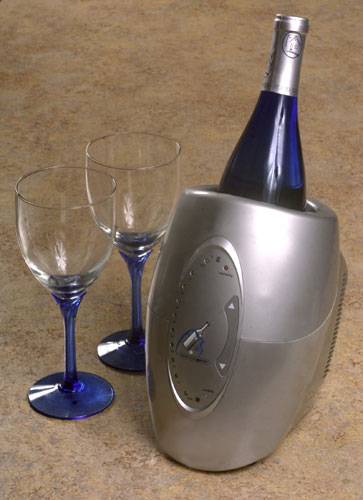
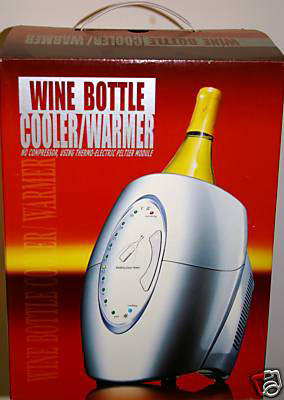
Sample ebay listing (item=260314363628)
http://cgi.ebay.com/ws/eBayISAPI.dll?ViewItem&item=260314363628
Here is the Zevex EnteraLite Infinity feeding pump, as sold on Ebay:
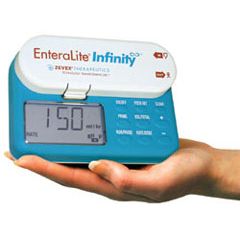
Sample ebay listing (item=320333085006)
http://cgi.ebay.com/ws/eBayISAPI.dll?ViewItem&item=320333085006
Part 1 of 5
Here is my solution to the problem of trying to feed continuously. My application was for feeding NPS corals, but this will work for any corals, and most fish. Here is a pic and vid of the food being sprayed into the display:

Video:
http://www.youtube.com/watch?v=uKLwB-xpRls
Advantages of continuous feeding:
Overall: The ocean generally feeds it's corals continuously (although maybe more at night), so duplicating this allows the corals (and some fish, especially tangs) to eat more like they do in the wild.
Less rotting: When you manually feed once or twice a day, much of the food gets past the fish and corals, and rots in the rocks and sand. When you feed continuously, the fish and corals get most of the food before it settles. So you get to feed the same amount, but the fish and corals get more, and less rots.
Keep pumps running: Many people turn their return pump off while feeding, so that food does not go to the sump. This is not necessary with continuous feeding, since most of the food will be eaten in a few seconds, and thus won't even make it to the overflow. So pumps last longer.
Keep skimmer running: Many people also turn their skimmer off while feeding. Again this is not necessary; food removed by the skimmer is being constantly replaced by the feeder (you may have to feed a little more, however, to make up for it.)
Mandatory for NPS: Non Photo Synthetic corals must have as close to continuous feeding as possible. Some of the more difficult NPS will actually close up if you feed too much at one time; thus, small continuous amounts are the only way to keep them alive.
No forgotten feedings: While not critical to fish, some corals (and certainly NPS) may not open again if you miss too many feedings.
More accurate: Since the feeder is automatic, you know for sure how much you are feeding, and how much you have fed. This makes it easy to compare coral growths (as well as nuisance algae growth) while varying the feeding amounts.
Free time: I thought that I'd miss feeding, but I don't. I still get to watch the feedings (for me, every hour), I just don't have to stand up and do them.
The main requirements of the feeder were:
1. Tiny feeding amounts: As little as 0.1 milliliters at a time. The foods that I'm using (Reed's Phytofeast and Reed's Rotifeast for the NPS corals; Reed's Arctipods for the other corals and for the fish) are very concentrated. Reeds recommends that the foods not be diluted in water; so very very small amounts of the concentrate must be fed each time.
2. Adjustable feeding amounts: In order to experiment with how much can be fed before problems arise (like nuisance algae), it needs to be pushbutton-adjustable. If you are feeding non-concentrated foods like melted mysis cubes (1 cube = 3ml), you could easily adjust it to a higher amount.
3. Adjustable feeding schedule: As short as every few minutes, or as long as every couple of hours. Or just plain continuous.
4. Ability to feed very thick liquids, including melted mysis cubes.
5. Refrigeration: Would keep the liquid chilled at all times, with an adjustable temperature as low as freezing (but would not freeze it).
6. Capacity: Would hold enough to feed an entire month without refilling.
7. Would sit on top of tank, so that the food would go directly into the display. This means the unit would need to be small, quiet, and have a decent appearance.
8. Reliability: It would not fail (and thus not starve the tank.)
9. Mechanically Safe: No possibility, at all, of all the food being fed at once.
10. Electrically safe: Splashed water, condensation, or salt creep would not shock anything, and would not cause failure.
11. Settling: Larger pieces of food should not settle to the bottom of the food container.
12. Cost: This is subjective, but for me the ability to keep NPS corals, and to not have to feed again for an entire month, means that I'd be willing to spend several hundred dollars.
Here is my solution: An electronic wine chiller, connected to an enteral feeding pump, sitting on the top of the tank:

A "digital" or "electronic" wine chiller is a thermoelectric chiller that does not use a compressor; instead it only has a fan. Some models actually have a digital readout, but the one that worked best for me does not. An "enteral" feeding pump is a peristaltic medical pump designed to feed patients who cannot eat; it pumps liquid food directly into the intestine. (Note: An enteral pump is different from an "IV" pump).
Here is the "Wine Bottle Cooler/Warmer", as sold on Ebay:


Sample ebay listing (item=260314363628)
http://cgi.ebay.com/ws/eBayISAPI.dll?ViewItem&item=260314363628
Here is the Zevex EnteraLite Infinity feeding pump, as sold on Ebay:

Sample ebay listing (item=320333085006)
http://cgi.ebay.com/ws/eBayISAPI.dll?ViewItem&item=320333085006


